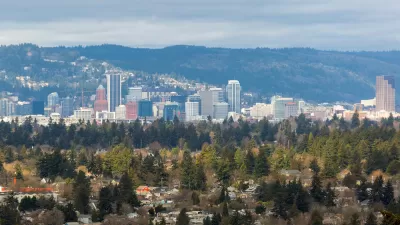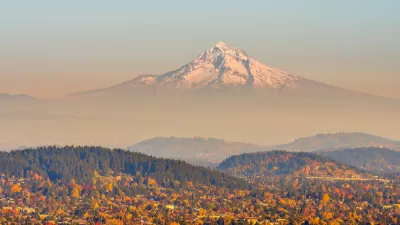A growing Portland has seen many arguments about how to accommodate an influx of residents—recommends the "step back" as a way to add density without adding shadows or creating wind tunnels.
The top of a building can have big impacts on shadows, wind passage, and views. Too often, Portland buildings are just blocks, argues Michael Mehaffy in a piece for Livable Portland. A preferable option would be to build "step backs" (step-like recessions at the tops of buildings) as a way to resolve some of the conflicts between the YIMBY crowd and those concerned about development in the city.
Why don't developers build more step back projects? "Profit-minded developers usually make more money when they go straight up from the street," Mehaffy argues. "But going straight up is precisely what a generation of failed “modernist” projects did in the 1960s, with very unhappy results," he goes on to say. Those who say they're concerned about the look of a project or its potential shadows might not be easily satisfied with this compromise, still the step back seems to be a good option for those that seek to build coalitions and…buildings.
FULL STORY: Is it time for Portland to rediscover the “step-back”?

Alabama: Trump Terminates Settlements for Black Communities Harmed By Raw Sewage
Trump deemed the landmark civil rights agreement “illegal DEI and environmental justice policy.”

Planetizen Federal Action Tracker
A weekly monitor of how Trump’s orders and actions are impacting planners and planning in America.

The 120 Year Old Tiny Home Villages That Sheltered San Francisco’s Earthquake Refugees
More than a century ago, San Francisco mobilized to house thousands of residents displaced by the 1906 earthquake. Could their strategy offer a model for the present?

Ken Jennings Launches Transit Web Series
The Jeopardy champ wants you to ride public transit.

BLM To Rescind Public Lands Rule
The change will downgrade conservation, once again putting federal land at risk for mining and other extractive uses.

Indy Neighborhood Group Builds Temporary Multi-Use Path
Community members, aided in part by funding from the city, repurposed a vehicle lane to create a protected bike and pedestrian path for the summer season.
Urban Design for Planners 1: Software Tools
This six-course series explores essential urban design concepts using open source software and equips planners with the tools they need to participate fully in the urban design process.
Planning for Universal Design
Learn the tools for implementing Universal Design in planning regulations.
Clanton & Associates, Inc.
Jessamine County Fiscal Court
Institute for Housing and Urban Development Studies (IHS)
City of Grandview
Harvard GSD Executive Education
Toledo-Lucas County Plan Commissions
Salt Lake City
NYU Wagner Graduate School of Public Service





























